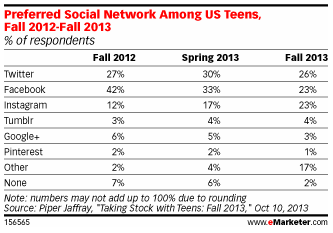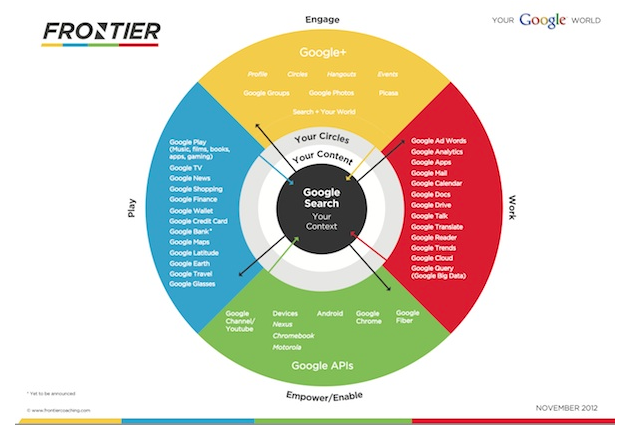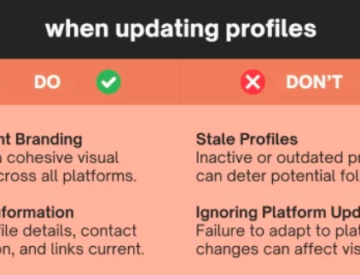Halloween is behind us, American Thanksgiving is upon us and the mad dash towards the end-of-year Holidays has begun. I will leave it to others to ponder on how 2013 was meaningful for businesses, small and large, as I would much rather take a look at what to expect in 2014 in terms of social media marketing.
For one thing, I believe most brands now understand the impact social media can have on their business, yet many are still dealing with the challenges that come with its reality. Among some of the key concerns:
- Generating enough content for consistent storytelling
- Demonstrating ROI of social media initiatives
- Allocating resources, both financial and human
- Integrating social media interactions in a holistic CRM approach
- Reorganizing corporate structures to deal with social media and user-generated content
These are but a few examples. A recent study conducted by Adobe showed that social media marketing remains the most important marketing area of concern for the upcoming three years.
So while social media now has reached a certain level of maturity beyond the phase of “the shiny new toy with bells and whistles”, where should marketers keep an eye for the upcoming year? Will Facebook still remain king of the social media hill or will there be (another) revolution that most aren’t seeing coming? Here are five social media marketing trends to look out for in 2014.
1. FACEBOOK DOWN, TWITTER UP
 With its 1.18 billion users, of which close to 58% are active daily, with an average of 20 minutes per day, Facebook is certainly not disappearing anytime soon.
With its 1.18 billion users, of which close to 58% are active daily, with an average of 20 minutes per day, Facebook is certainly not disappearing anytime soon.
Outside emerging markets where growth is still happening, Facebook has reached a certain plateau, with even some decreases within the younger generations, in particular the 13-17 teens.
For brands, in particular small & medium businesses (SMB), it’s getting increasingly difficult to master the platform and gain a vibrant community without spending some efforts and allocating substantial efforts, both in time and money. (Read: 4 Key Elements of Your Facebook Marketing)
One thing is for sure, though: 2014 should be the year of Twitter. There fact that it will become a public company will throw the 7 year-old platform into the limelight, and with it comes public scrutiny. Many bystanders will want to better understand the platform, which should in turn convert many latent users to come back and give the platform another try.
A study by Pew Internet & American conducted earlier this year found that more and more teenagers were jumping ship from Facebook to Twitter and Instagram, in great part “because there is less drama”. It’s also easier to fly under parents’ radars and have a more secretive approach on Twitter. Many brands already use Twitter, in particular in the travel & hospitality vertical, i.e. airlines, hotels, destinations, etc. Having more users join this social media should consolidate Twitter as a great customer service platform, not to mention lead generation and R&D.
2. SNAPCHAT MARKETING
The words “Snapchat” and “Marketing” are usually not found in the same sentence, but this may very well change in the near future. If you are not familiar with Snapchat, it’s the hot and trendy mobile application that sends out messages (text, photo or short video), called “snaps”, that auto-destruct after a short moment of time, between 1 to 10 seconds depending on how the snap was set up.
As of April 2013, its 5 million active users were uploading over 150 million photos per day! There mere fact that snaps get deleted from the server after their time limit explains why so many people are embracing this new app. Its ephemeral aspect contrasts with privacy issues that are plaguing other platforms, with a “spur of the moment” side that can become an opportunity for brands. Yoghurt company 16 Handles is thought to be the first brand that conducted a promotion using Snapchat, earlier in 2013, and a few others have experimented since.
With the recent launch of Snapchat Stories (see video below), brand marketers now have an opportunity to ask customers to share their stories, or interact with them while in their store, hotel or destination, to increase engagement and share-of-wallet with in-store promotions. Snapchat marketing should be two words you’ll soon learn to combine!
3. GOOGLE+… FINALLY?
Ah, yes. Google+… Earlier this year, a study published on emarketer found that Google+ had now over 540 million active users, making it number two worldwide after Facebook. I even questioned these finding in Is Google+ Really the 2nd Most Popular Social Network? even though I never have doubted the efficiency of the platform itself.
Yet, with recent changes in its search algorithm under code name Google Hummingbird, and the evolution of its popular Google Hangout functionality as a full-blown, stand-alone application, Google continues to push the envelope. Google+ remains at the very heart of its strategy, as can be seen in this very telling graphic:
So with search engine optimization techniques evolving and its importance still at the heart of marketers’ concerns, Google+ remains a very important part of the digital landscape puzzle.
The question that lingers is whether Google+ will garner more mainstream attention, i.e. get folks to stick around longer, and that much sought-after time spent on the platform in order to draw advertisers and marketers attention. With over 1.5 billion photos shared weekly, there is certainly more action happening. The jury’s still out, but 2014 should be a key year for Google+.
4. COLLABORATIVE GOES MAINSTREAM
 Even though sites such as AirBnB have now been around for over five years, it’s safe to say 2013 was the year when the sharing economy, or collaborative economy, made big strides in the public agora.
Even though sites such as AirBnB have now been around for over five years, it’s safe to say 2013 was the year when the sharing economy, or collaborative economy, made big strides in the public agora.
In the past decade, with user-generated content platforms such as TripAdvisor or Yelp, individuals have had the ability and power that comes from bypassing traditional channels to voice concerns and feedback, be it negative or positive. But now, one can truly observe how the collaborative economy is truly a disruptor in the travel industry, among others. New technologies now make it so much easier for people to deal directly with other people, in what some also call the peer-to-peer movement (P2P).
In my opinion, we are just scratching the surface and I suspect we’ll be seeing new, innovative ideas and business models based on the sharing economy, where folks won’t wait for brands to answer their needs but rather address them through novel approaches.
In the travel sphere, we are already seeing guided tours, transportation alternatives, home-cooked meals hosted by locals and of course the very lucrative business of renting out rooms, apartments or unique accommodation outside of traditional channels. But this trend is not unique to travel & hospitality: folks can now borrow working tools from peers, rather than buying them at Lowe’s or any known retailer.
5. VIDEOS ARE HOT, HOT, HOT!
Last but not least, videos should continue their upward ascent in the social media marketing toolbox hierarchy. In particular short videos. YouTube shows no sign of fatigue, all the contrary in fact with its 100 hours of video uploaded… every hour!!
Yet for brands, the best promises come from the rise of applications such as Vine, with its 6-seconds video capabilities, and Instagram, with its 15-seconds video capabilities complete with filters and integration within Facebook.
When I attended Social Media Marketing World Event back in April, in San Diego, videos (along with blogs & podcasts) were indeed already identified as the hot marketing trends to look out for. And we are now seeing more and more companies embrace these short videos as quick, inexpensive and efficient ways to tell their brand story.
Without a doubt, this is one trend we can expect to grow in 2014. If pictures tell a 1,000 words, videos can tell a million!
Is there a key social media marketing trend you think I should have highlighted and that’s missing from this post? Let me know in the comment box below. Looking forward to engage the conversation!











Leave a Reply